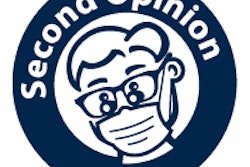
Pick up a Henry Schein or Paragon appraisal and valuation of a dental practice. If you excuse the pages defining the multiple definitions of fair market value (FMV), they both recommend the following:
A Dental Practice is valued on the basis of the Net Collections of the prior year as recorded and confirmed by the practice multiplied by a set percentage rates of between 60%-90% with choice of which range of percentage to use consisting of a mixture of asset aging, net cash flow, and goodwill, defined as the difference between accounting assets and the purchase price recommended by Schein or Paragon.
 Thomas Climo, PhD, is a dental practice management consultant and a past professor of economics in England.
Thomas Climo, PhD, is a dental practice management consultant and a past professor of economics in England.
This is a perfectly circular formula containing no economic method, and it is a wide swing from any of the definitions of FMV provided in the introduction to the Schein and Paragon appraisal reports. Worse, it fails to recognize any "value" in the often more than 20 years of work effort on the part of the selling dentist as to the potential he or she is leaving for the buying dentist and practice successor.
Schein and Paragon make "adjustments" to practice financial reports based as they are on accrual accounting and historic cost. This is intended to reflect a modern economic approach: cash flow accounting. In reality, all the adjustments do is reconfirm the formula provided.
It was Gottfried Wilhelm Leibniz who once said, "The present is pregnant with the future." He did not say the present should be determined by the past.
An appreciation for potential
Modern economics agrees with Leibniz. Instead of eliciting this crude valuation for a dental practice, it employs instead a valuation formula that has drive, power, and an appreciation for the potential of a dental practice that is unavailable to those using a Schein or Paragon valuation model. The formula recommended by modern economics is as follows:

- V is the value of a dental practice to the seller.
- j = 1 ... n is the number of years of expected investment of the buyer.
- C is the net income for a particular year j = 1 ... n, with a final year in a net repeatable form. (It is often recommended to use earnings before interest, taxes, depreciation, and amortization (EBITDA) to replace net income, the presumption being that with EBITDA we are measuring economic and not accounting profit. But any economic profit must include the cost of capital and the degradation over time of long-life assets. Cost of capital is dealt with in the classic valuation formula as stated above. However, to quote Warren Buffett: "Does management think the tooth fairy pays for capital expenditures?" Depreciation, while not exact in its accounting formulation, remains the most practical method available.In light of this, the valuation formula used in this article prefers net income over EBITDA.)
- r is the cost of capital as expected to range over the term of the investment.
The great thing about this modern economic formula is that when the net income is in a repeatable form, the stream of income for the dental practice can be valued as an annuity with an annuity formula:
V = Cj ÷ r
A contrast in valuations
An illustration will be helpful. Suppose Dr. A is selling his practice to Dr. B. Dr. A set up his office in January 1982 (30 years ago). In his first 10 years of practicing, his collections sat at around $500,000 until he renovated his office, added two new operatories to complement his existing two, and, for a middle period of about 15 years, took in collections of $1 million or more. In the last five years, he began to downsize his office in terms of office hours so that in the past three years he has returned to collections of about $500,000.
The contrast in valuations from the ancestral approach of Schein and Paragon to that of modern economics is shown in the following table. The top half depicts "ancestral" while the bottom half is "modern." The ancestral approach shows four valuations predicated on percentages, while the modern approach shows valuation predicated on "hurdle rates" that determine the return on investment (ROI) sought by the seller or buyer of the dental practice.
|
|||||||||||||||||||||||||||||||||||||||||||||||||||||||||||||||||
While Schein and Paragon dramatically discount the "true" sales price of Dr. A's practice based on market potential, modern valuation clearly recognizes this potential.
Modern economics, through application of a "hurdle rate" expected from net future collections, serves as a better and fairer barometer for the value of a dental practice than a crude valuation expressed in terms of percentage of past net collections.
If you are a dentist, or if you are a technician who knows a dentist, advise him or her not to sell off his or her life's work and revenue effort on the basis of a badly scripted appraisal or valuation model as is currently in evidence in sales transactions of dental practices.
Thomas Climo, PhD, is a professor emeritus of accounting and finance at a major university in the U.K. He has published extensively about the importance of modern managerial and financial decision-making for dentistry. He is a consultant to corporate and solo practitioner dental practice management companies in the states of Arizona, California, Connecticut, Nevada, New Hampshire, New York, and Massachusetts. He can be reached by email at [email protected] or by telephone at 702-578-2757.
The comments and observations expressed herein do not necessarily reflect the opinions of DrBicuspid.com, nor should they be construed as an endorsement or admonishment of any particular idea, vendor, or organization.



















